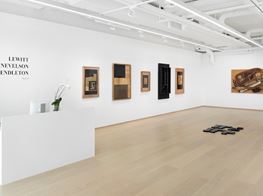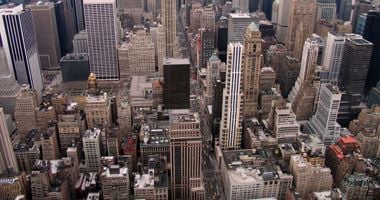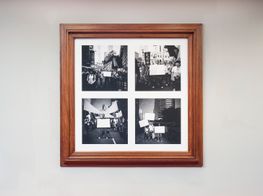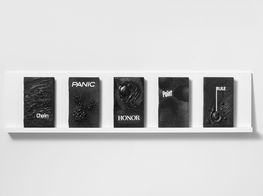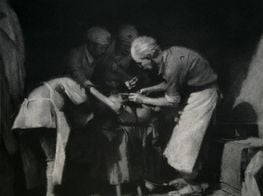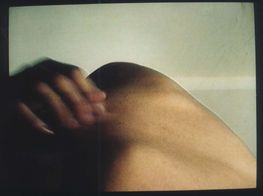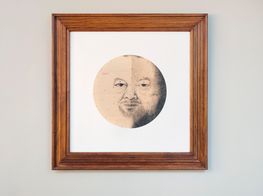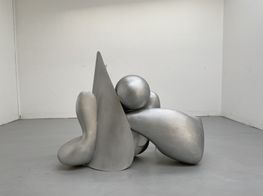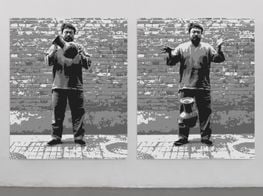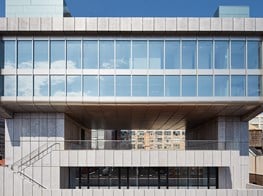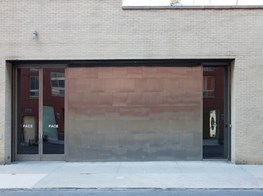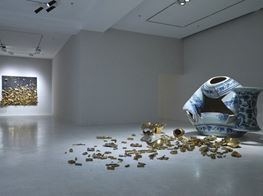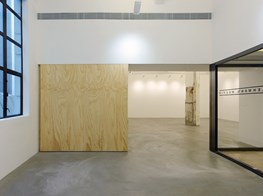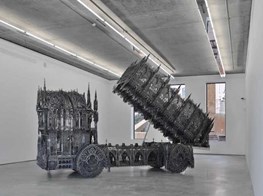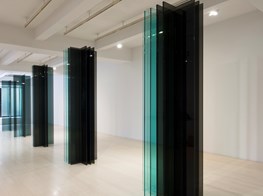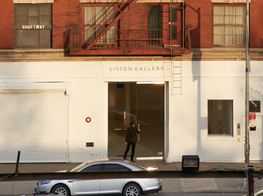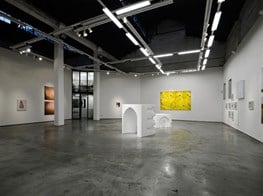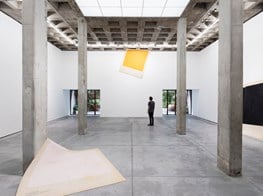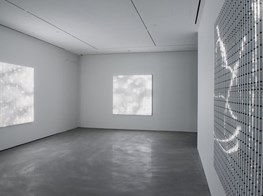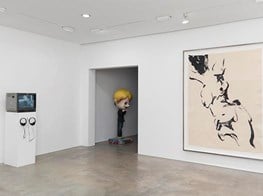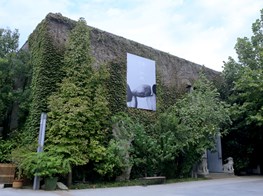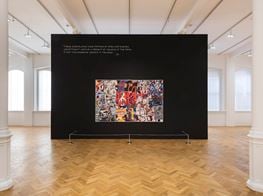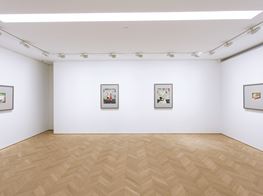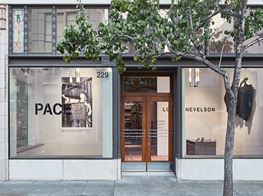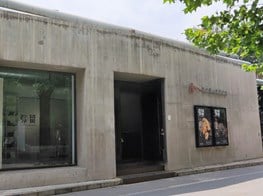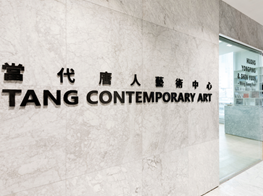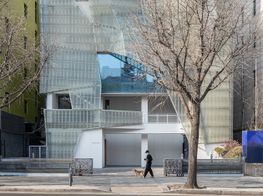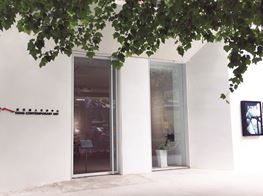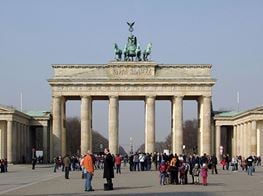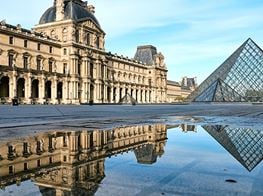Doryun Chong (Part Two)

Doryun Chong is Chief Curator at M+, Hong Kong's super museum for visual culture. Prior to joining M+, Chong was Associate Curator of Painting and Sculpture at the Museum of Modern Art (MoMA), New York, and prior to that, he was a curator in the visual arts department at Minneapolis' Walker Art Center from 2003 to 2009.
At MoMA, Chong organized Bruce Nauman: Days (2010); Projects 94: Henrik Olesen (2011); and Tokyo 1955-1970: A New Avant-Garde (2012); and co-edited From Postwar to Postmodern, Art in Japan, 1945-1989: Primary Documents. At the Walker Art Center in Minneapolis, Chong organized exhibitions including Haegue Yang: Integrity of the Insider (2009); Tetsumi Kudo: Garden of Metamorphosis (2008); Brave New Worlds (2007); and House of Oracles: A Huang Yong Ping Retrospective (2005).
He has also curated or coordinated exhibitions at venues including REDCAT in Los Angeles, the 2006 Busan Biennale, and the Korean Pavilion at the 2001 Venice Biennale. His writing has appeared in journals such as Artforum, Afterall, The Exhibitionist and Parkett, and museum and biennale publications by the Auckland Triennial, the Gwangju Biennale, and Kunsthaus Bregenz, among others.
M+ focuses on 20th and 21st Century visual art, design and architecture and moving image; and Chong is part of its growing team of curators that already include Aric Chen (curator, design and architecture), Tobias Berger (curator, visual art), Pi Li (Sigg senior curator, Chinese contemporary art), Stella Fong (curator, learning and interpretation), Pauline Yao (curator, visual art), and Lesley Ma (curator, ink art).
Despite not having a permanent physical space as yet, (the 60,000 square-metre M+ building is set to open in the developing West Kowloon Cultural District in 2017) M+ is nevertheless an operating and active museum.
This year the Museum has presented its 5th M+ Mobile exhibition, Building M+: The Museum and Architecture Collection—an exhibition that showcased the winning architectural design for the Museum by Herzog & de Meuron, with TFP Farrells and Ove Arup & Partners HK, along with the first acquisitions and donations to its expanding architectural collection.
The Museum's most recent exhibition, You', opened on March 6 at the historical Hong Kong site, Cattle Depot Artist Village, and comprises an expanded adaptation of 'You (you).', Lee Kit's solo presentation for Hong Kong at the 55th Venice Biennale.
In addition to presenting carefully curated exhibitions, the Museum is rapidly expanding its collection. On the morning I meet Doryun Chong, M+ has just announced the donation by Guan Yi, one of the region's important art collectors, of 37 key pieces of Chinese contemporary art.
This donation builds upon Swiss Collector, Dr Uli Sigg's pivotal donation in 2012 of over 1,463 Chinese contemporary artworks—valued at over US$160 million. In this two- part interview, conducted at M+'s Kowloon offices, Chong discusses among other things, Guan Yi's recent donation and how it relates to the Uli Sigg collection, along with his background, curatorial approach, and aspirations for M+.
ADM+ recently received a major donation from Guan Yi. Tell me about the donation?
DCThe collection comes from Guan Yi, a private collector who lives in Shanghai, Guan Yi started collecting in the early 2000s. At that time, not so many people in China were collecting works that were so large, or ephemeral and conceptual, and he was the first one to do that. He focused on a lot of installations and a lot of conceptual projects. He says he was very inspired by Uli Sigg's amazingly generous donation to the M+ collection.
Guan Yi planned his donation in a very careful and strategic way —through many conversations, especially with my colleague Pi Li—so that it can fill some of the 'missing gaps' in the M+ Sigg Collection, which is the most definitive collection of Chinese contemporary art, but has certain lacks, as any collection does.
ADPart of the donation is an entire exhibition — Canton Express?
DCCanton Express was presented at the 50th Venice Biennale, as part of the exhibition Zone of Urgency, which was curated by Hou Hanru.
For that Biennale, Francesco Bonami—the artistic Director—asked several curators, including Hanru, to curate different sections of the Biennale. He in a sense distributed his artistic directorship to other curators of his generation. I remember the biennale very well because it was broadly panned—people thought it was a mess and chaos—but when I look back, it was such an important exhibition. (It was also very memorable because it was horrendously hot that year).
...a serious institution, even from the last century, always has to be rooted where it is based, but that should not preclude its potential to be international and global.
Zone of Urgency gathered some of the most exciting art-making from the wider East Asian region at the time, and Canton Express was part of this. It was a pivotal moment when artists from East Asia, particularly those from Southern China, who had been rather neglected and overlooked, really debuted on the international scene. Their works were not only internationally exposed, but were put in discourse with works from other smaller epicentres around the world that had also been overlooked.
So, in hindsight, it was a very prophetic exhibition. It was also very savvy of Guan Yi to take interest in the exhibition and to have the foresight to bring it into his collection.
ADYou have mentioned the idea of 'filling gaps' in the Collection. The M+ collection thus far has over 3,000 works—where are the major gaps?
DCFirst, I should point out that people often think that we are going to be a Contemporary Chinese art museum—but we are not. Art from and relevant to China is just one portion of our visual arts programme and the collection we are building. Where are the gaps? They are everywhere!
You saw our architecture collection that was shown as part of the Building M+ exhibition—this was only a sampling of the collection that has been put together because Aric Chen, our curator of design and architecture is on a crusade to build this part of the M+ collection, a collection of architecture and design that doesn't exist anywhere else. We have to do a lot of work in the moving image area. We don't have yet a curator specialising in this area. The existing visual art curators, including myself, can certainly cover the field of video art but there is a lot of work to be done in terms of cinema, for instance.
We need to define our purview with regard to moving image by asking questions such as 'Are we going to collect cinema?' and 'What are our strategies?' My feeling, right now, is that we should indeed have a collection of cinema. We don't have to be the definitive collection of cinema in the region, but we need to and want to have a core collection that certainly represents Hong Kong film history and other important topics within East Asian film history, without duplicating the efforts of other institutions, like Hong Kong Film Archive, for instance.
So where are the gaps—well all of these are gaps which we are defining and filling at the same time. It's a constantly ongoing process.
To me it is very clear how my own trajectory through different institutions are affecting and shaping the way that I think and behave here.
ADIt is important I think for people to understand this is a global Museum, with a Hong Kong perspective.
DCHere is one way I think about this. Let's go back to MoMA and look at that museum. Let's go back to the beginning.
It was from the beginning an international and internationalist institution, right? Sure, honestly speaking, its purview is not really international so much as transatlantic—mainly connecting North America and Western Europe. But to be fair, MoMA in its early years wasn't just looking at Paris, the so-called 'capital of modern art'. It was also looking at Berlin as well as other cities in Germany because Bauhaus was of great interest to MoMA, for example. It was looking at Russia because Suprematism and Constructivism were important in its conception of modernism.
In other words, MoMA thought of and is thinking of the early 20th Century avant-garde in a very internationalist way. If you ask those who are shaping MoMA presently, they will say that MoMA is a global institution. Certainly the collection and research areas reflect that. The museum isn't just focused on the West; Latin America is a huge area, as is Eastern Europe, and I was part of a research team that looked at Japan and rest of East Asia during my time there.
But, let's be honest about it—when you look at the MoMA collection and the programming there—at least 70 to 80 per cent deals with so-called Western art. So the way that I try to imagine M+, is to flip that, but hopefully with a better percentage and a better balance. That is, let's say Hong Kong, China and East Asia will take up about 50 to 60 per cent of our collection and programming, the rest of it should be other parts of Asia (Southeast, South, and West), as well as North America, Western Europe, and Latin America, etc.
Because we are an institution being born in the 21st Century, we cannot but be a global institution. And a serious institution, even from the last century, always has to be rooted where it is based, but that should not preclude its potential to be international and global.
ADPrior to MoMA and M+, you were a curator at the Walker Art Center in Minneapolis. At the Walker, I understand the mantra that ran through all aspects of the institution was 'Global, Diverse, Multidisciplinary.'
DCThe Mantra! [laughs]—that is right!
ADWell it seems to me that this is a very similar mantra perhaps to that which M+ might adopt?
DCYes, I think so. We are a museum of the 21st Century. We are locally rooted in Hong Kong, but globally minded. 'Global, Diverse, Multidisciplinary' aren't totally 21st Century ideas. They are ideas that emerged in the late 20th Century. The Walker was really a pioneering institution in its approach—the way that it actually put these issues on the table and put them to practice.
The Walker, in the 1990s and 2000s, changed its institutional DNA in explicit ways no other modern and contemporary art museums had done. When I got there, this approach was so impressive to me. During my years there, I was very much affected and shaped by it, and I think I carried that experience to MoMA, which I think was also thinking very globally but it had greater limitations because of the weight of its own history. At MoMA, 'diverse' or 'global' projects tended to become lost within its huge institutional structure.
Now that I am at M+, well, I suppose the reflections, even the frustrations that I had at MoMA and also at the Walker certainly inform what I am doing here. To me it is very clear how my own trajectory through different institutions are affecting and shaping the way that I think and behave here. -[O]

